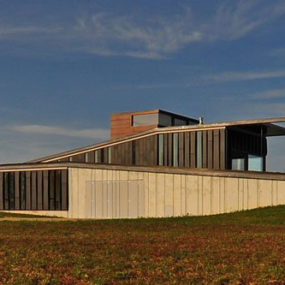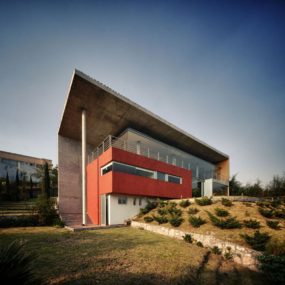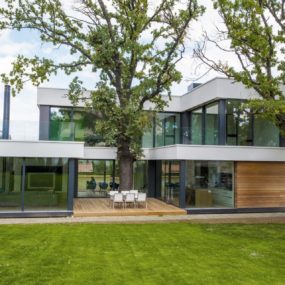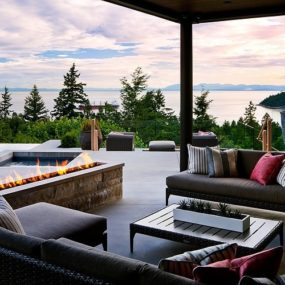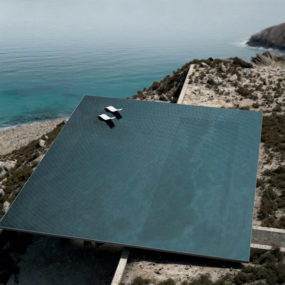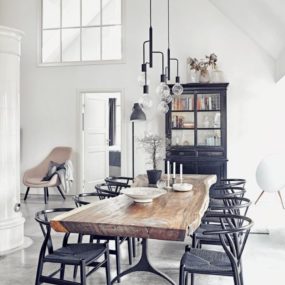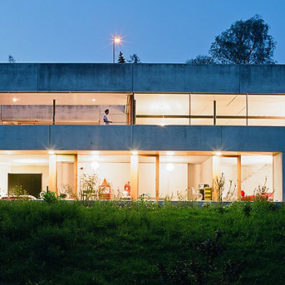Passive heating and cooling is a great way to reduce the amount of energy a home needs to be comfortable and there is nothing like the earth itself to insulate the home against both heat and cold. This is exactly the reason Luigi Rosseli Architects designed The Great Wall of WA in northwestern Australia. By using a 450mm (1.5 ft) thick, rammed earth facade on 12 semi-buried homes, the architects where able to achieve a thermal mass to keep the homes cool in the subtropical climate.
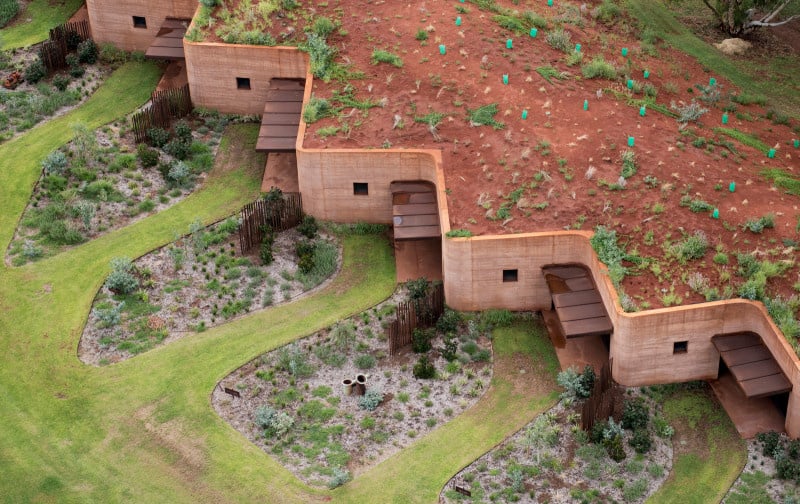
At 230m (754 ft) long, The Great Wall of WA is the longest rammed earth wall in all of Australia and replaces the common corrugated metal shelters usually found in the locale for seasonal residences.
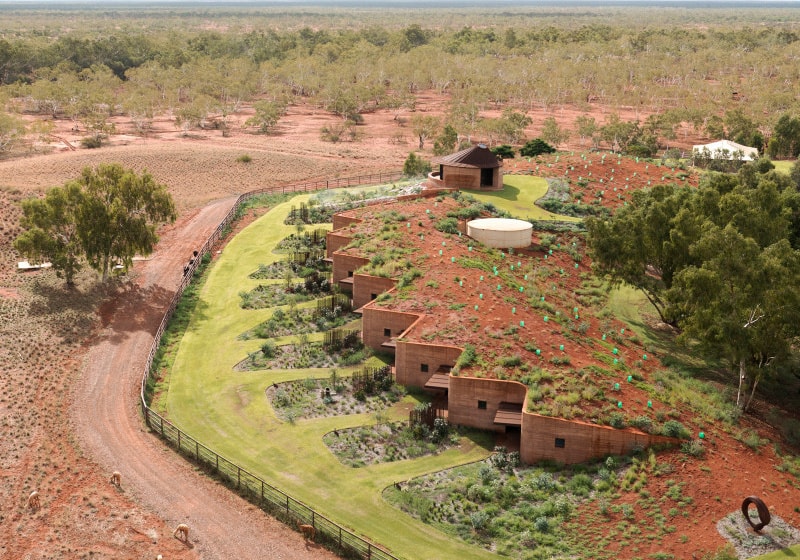
Following the line of a sand dune and using it to form the back of the houses, The Great Wall of WA is a cattle station that encloses 12 temporary houses used during mustering season.
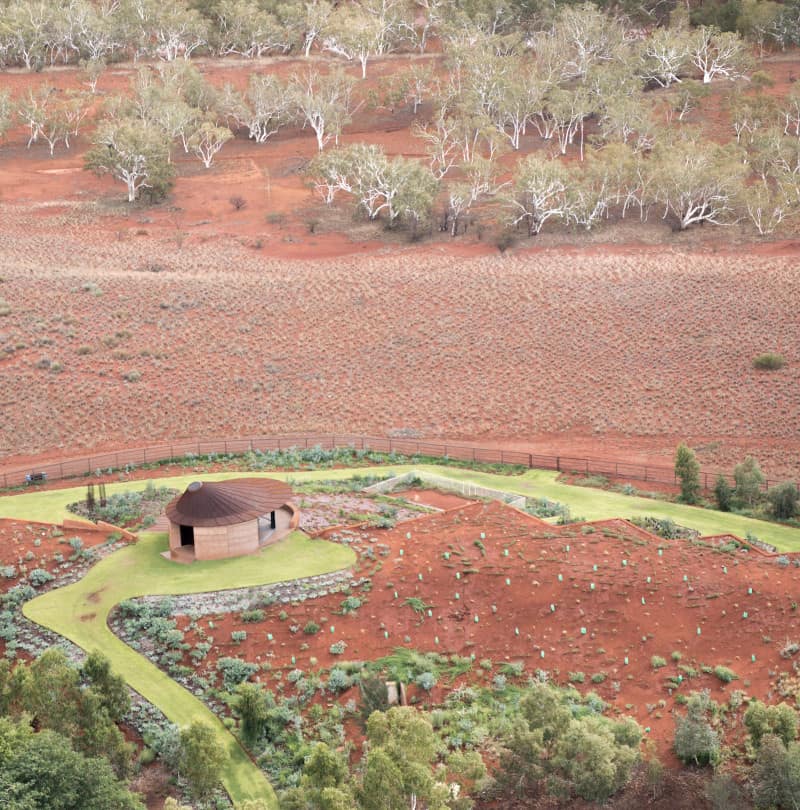
The earth wall is a composite of iron rich, sandy clay typical to the site bonded with gravel and pebbles quarried from a nearby river. The bonding agent is water from a local borehole.
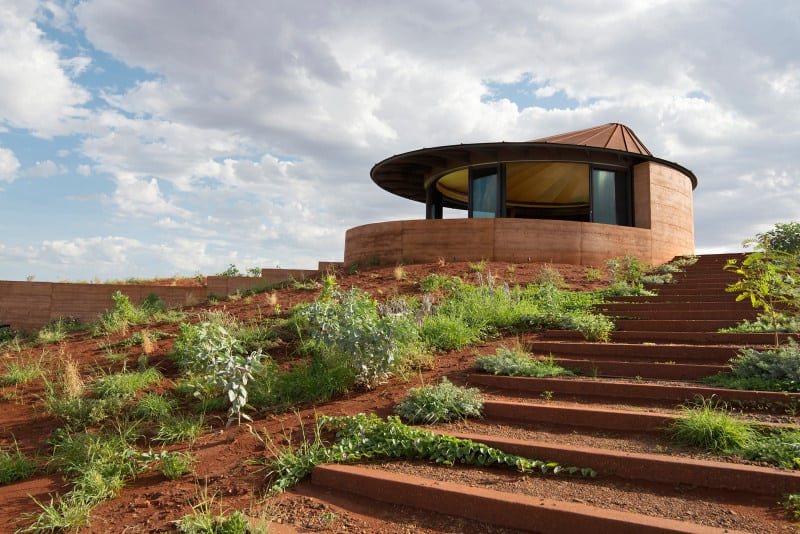
The structure resting at the apex of the meter deep sand hill is a conference room and chapel, although originally conceived as an open pavilion, the design was later adjusted to include sliding glass windows to protect it from the sand storms the area is known for. The glazings are curved to follow the facade.
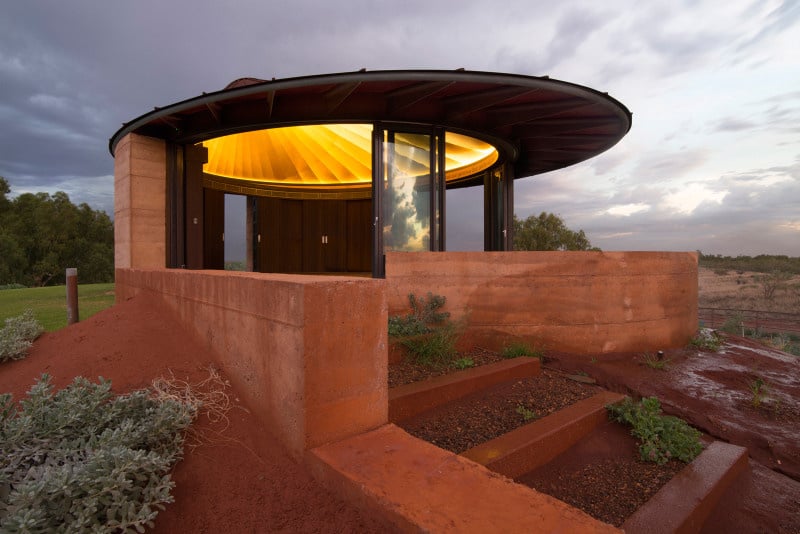
The roof of the Chapel was constructed off site in two Corten steel sheets that when put together form an oblique cone with a skylight in the center.
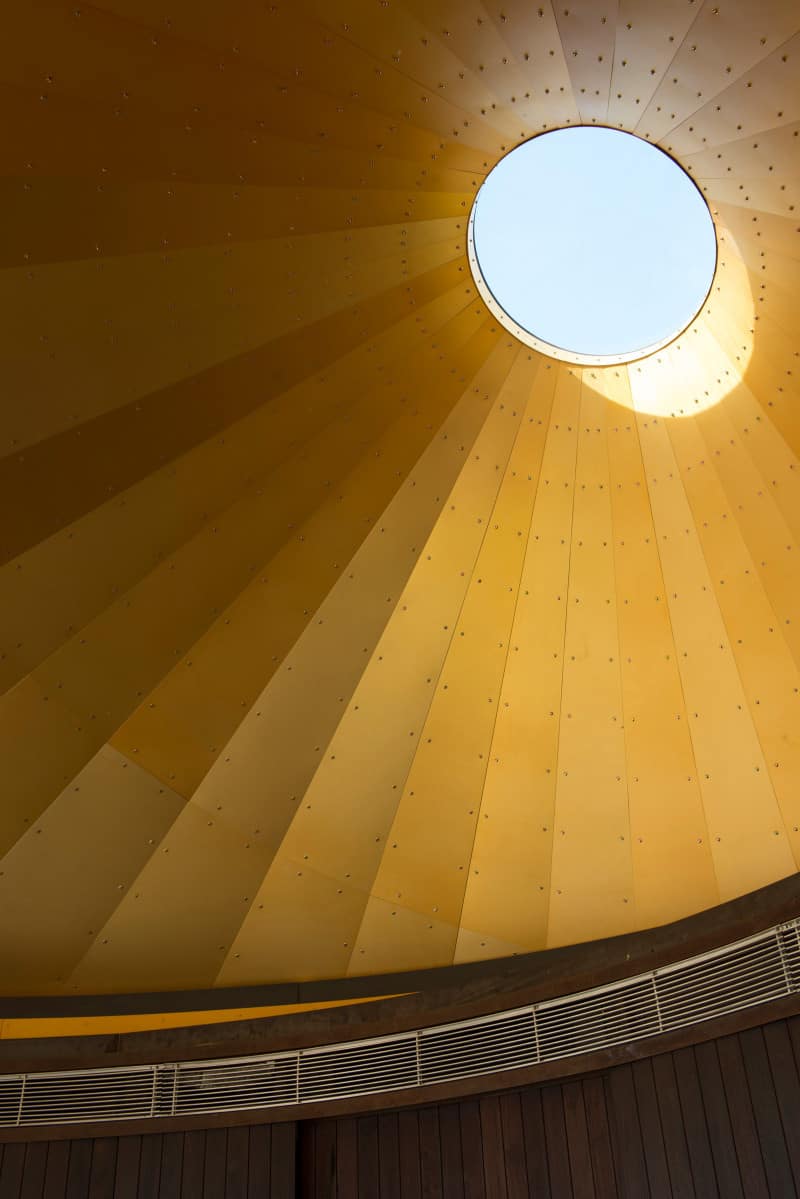
Cyclonic rated gold anodized aluminum sheeting covers the ceiling of the chapel.

A glass covered oculus with its muse in the Pantheon of Rome faces east to maintain a celestial connection.
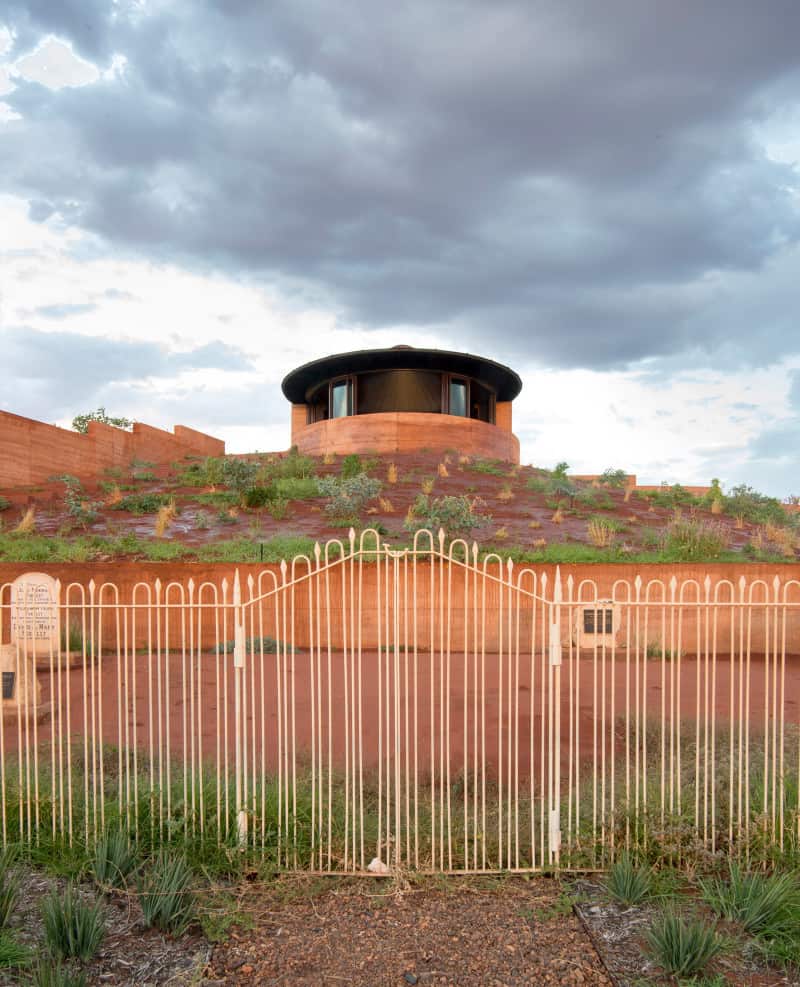
The chapel looks out over a 100 year old family graveyard as well as the riverbank in the distance. The cemetery is protected from the local wildlife by a fence.
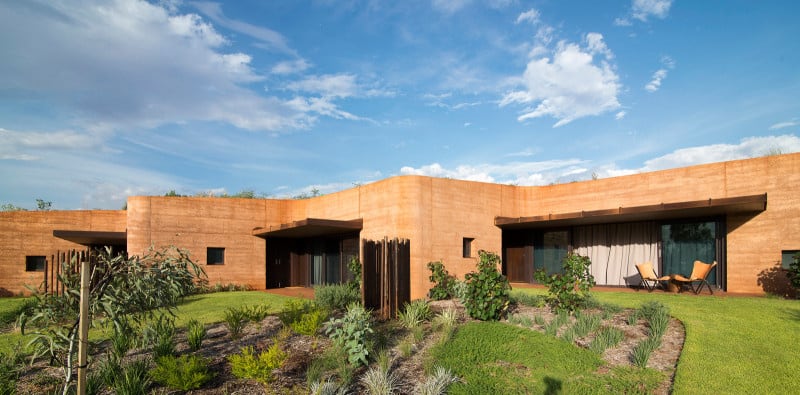
The cemetery is not visible from the semi buried dwellings, each which looks out over small semi arid landscaped gardens.
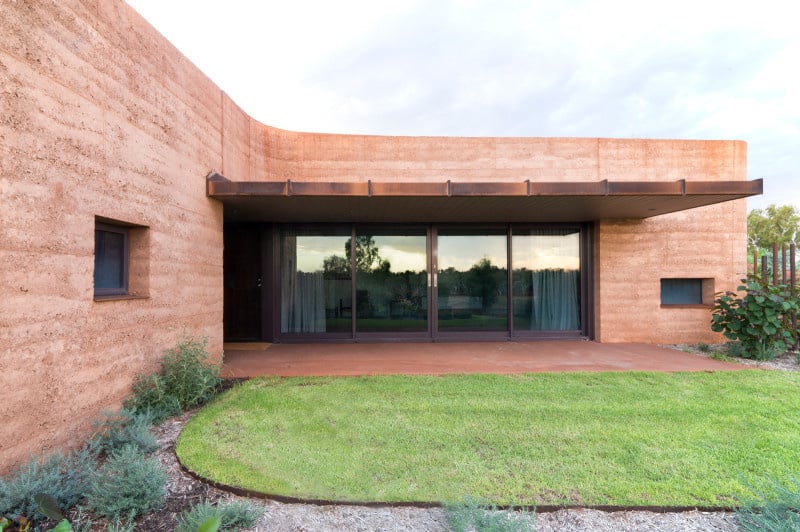
Each of the units has a private terrace thanks to the staggered design. The terraces are concrete slabs that contain river gravel and aggregates and it is these additions that give the concrete its reddish hue.
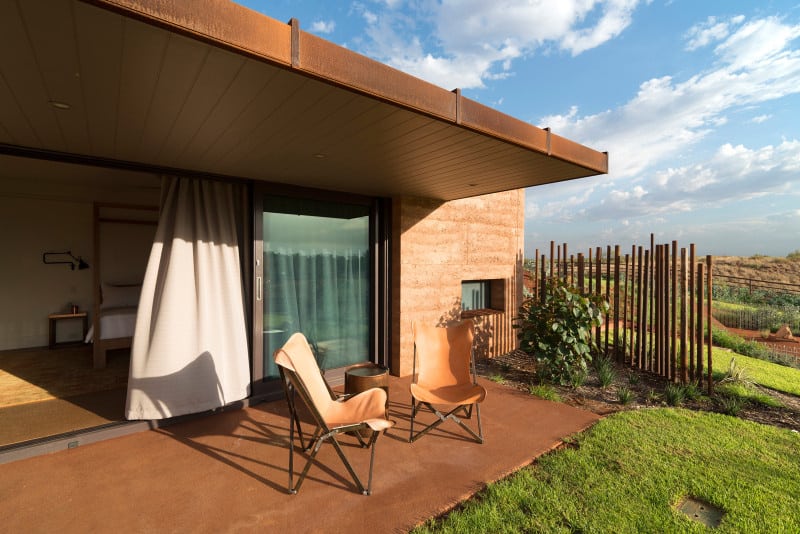
The concrete slab terraces are sheltered from the sun via a cantilevered roof made from Corten Steel that repeats the shape of the concrete slabs below.
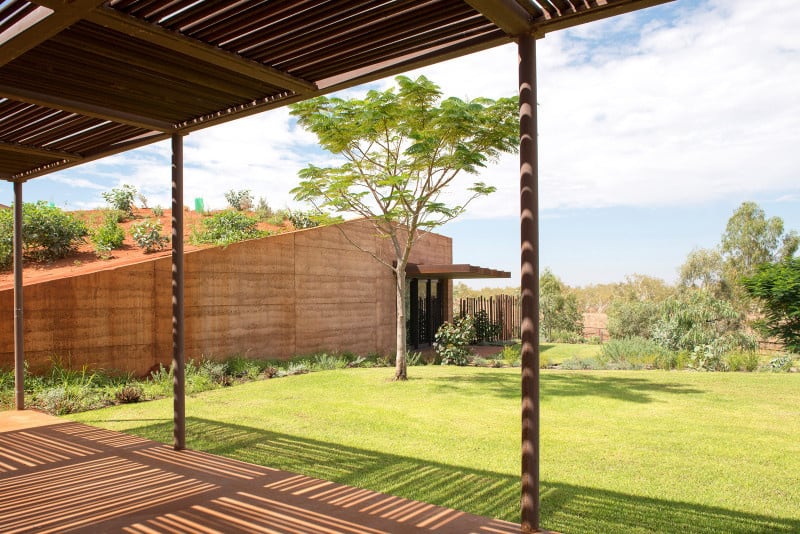
On the north end of the dwellings is a pre-existing building that is now used for formal and informal gatherings. This structure is built from old drilling pipes and when the sun passes through the voids a geometric checkerboard pattern is created below.
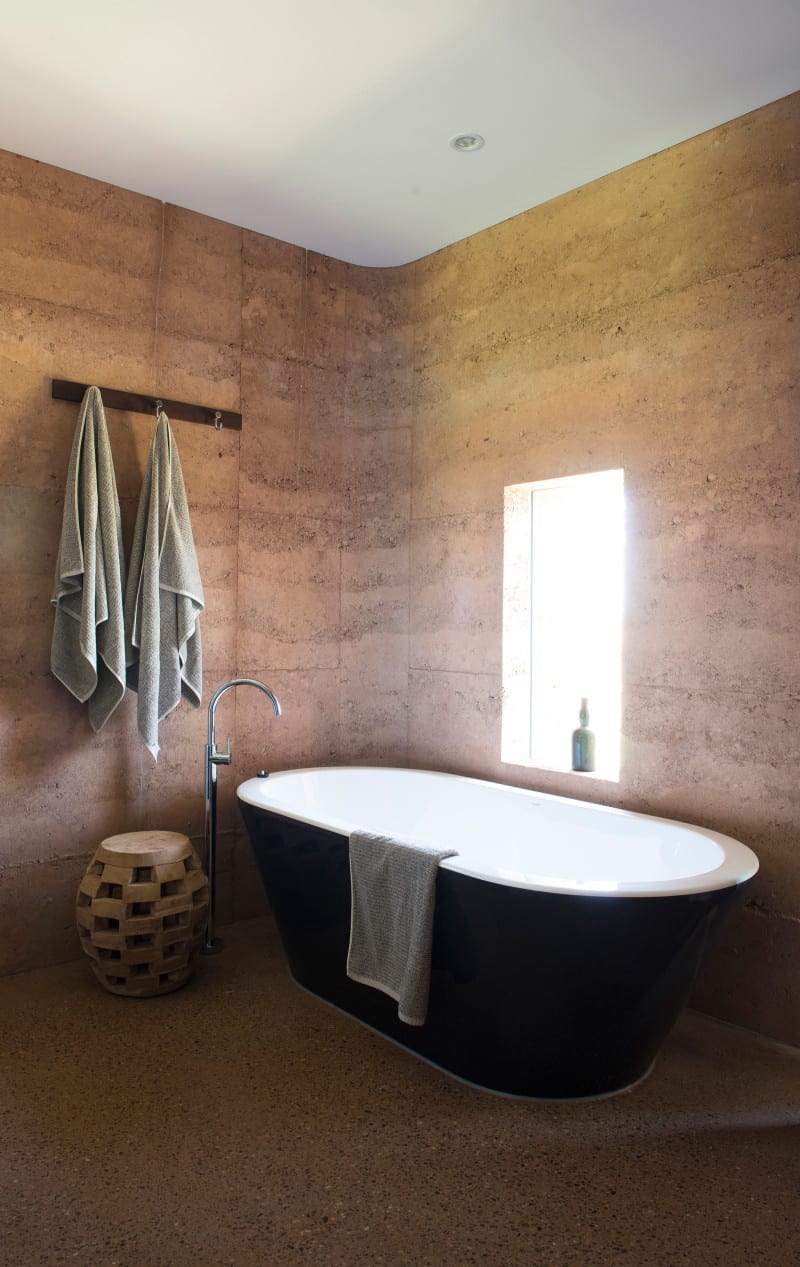
Interior designer Sarah Foletta created comfortable living spaces inside each unit by mimicking the colors of the surrounding landscape. This was mainly achieved by using a natural selection of materials in both the finishing details and the furnishings.
Luigi Rosseli Architects
Photography by Edward Birch
Underground homes are a smart and natural way to create passive cooling or heating and they also have the added benefit of being sheltered from any rough weather that might happen by.

